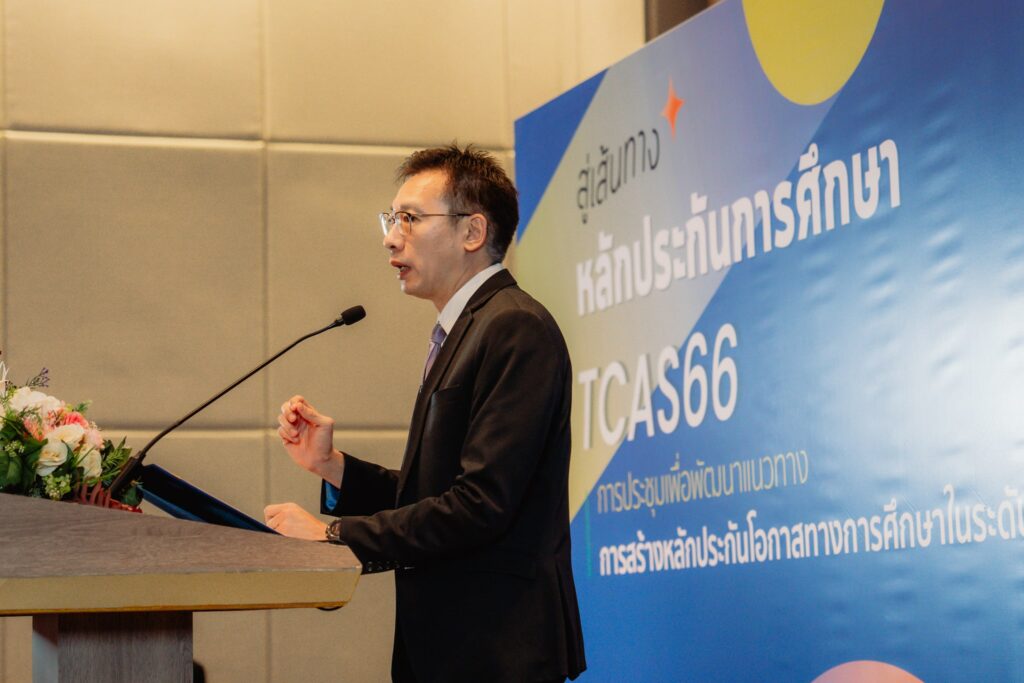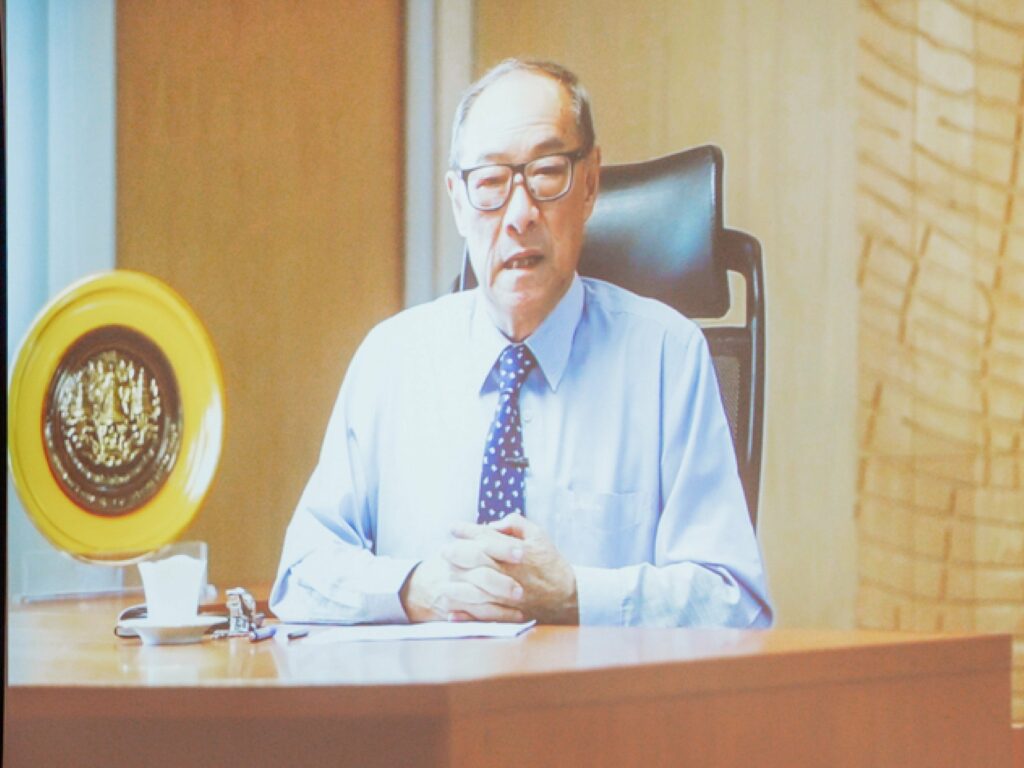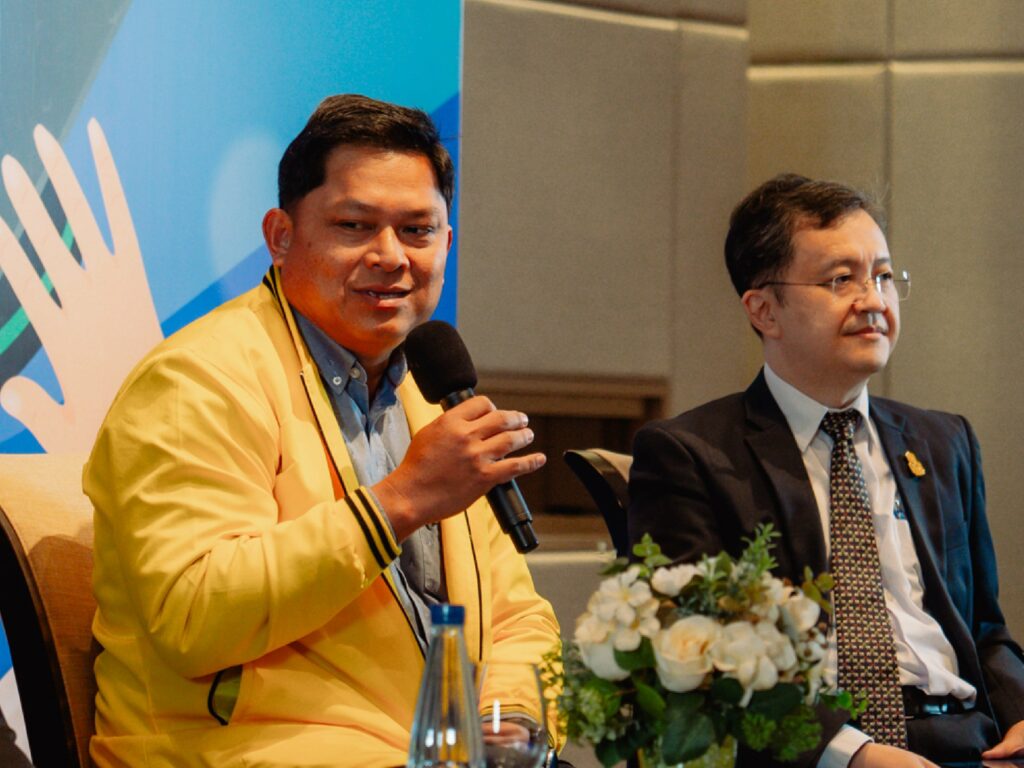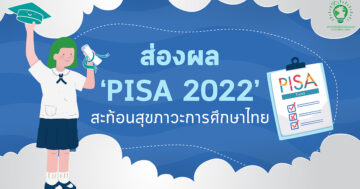More than 1.8 million Thai children were determined to be in danger of leaving the country’s educational system due to the status of educational inequality in 2022, according to a survey by The Equitable Education Fund (EEF). Because the welfare payment for low-income students does not cover kindergarten, high school, and vocational levels, children, particularly those in the transitional period (Primary 6, M. 3, M. 6), frequently drop out of school and do not return.

While this is going on, there is still a significant discrepancy between poor and rich children’s rates of university enrolment. According to a 2021 analysis of data from the Office of the National Economic and Social Development Council, just 11% of Thai youth from the 10% of families with the lowest incomes are able to attend college. Children from the richest 10% of households in the nation have incomes more than six times lower than that.
Due to this, a meeting was held to discuss and decide how to start working on the TCAS66 educational security path. On Tuesday, July 4, 2023, a “meeting to develop guidelines for ensuring educational opportunities in higher education” took place in the Brahma Room of the Asawin Grand Convention Hotel. The design and development of guidelines for establishing educational opportunity guarantees in 2021 has the support of numerous higher education institutions and related organizations.
The Ministry of Higher Education, Science, Research and Innovation’s Deputy Permanent Secretary, Prof. Supachai Pathumnakul, Ph.D., stated that “Human Resources Development” has been a crucial component of the nation’s development over the previous two years. Children in Thailand can escape poverty traps because to the “Educational Opportunity Security Road,” which offers equitable access to educational possibilities for everyone.

“Our goal is to ensure that everyone has access to an equal, fair, and equal education. Entering a university is like opening the first door to enhancing a child’s quality of life, particularly for those under the care of the Equitable Education Fund. Children with skills who contribute to the economy as a whole will be able to lift families out of poverty.
As a result of the collaboration, scholarships were awarded to more than 21,922 students under the control of the Equitable Education Fund, accounting for 12.46 percent of the total and showing an upward trend. This group of students is comparable to “white elephants” (Resilient Students) who, despite hailing from households with earnings below the nation’s poverty line, overcame challenges to complete their elementary education and successfully enroll in college.
The Chairman of the Area Based Education Management Committee, the Equitable Education Fund, and the former Secretary-General of the Higher Education Commission, Dr. Krissanapong Kirtikara, Ph.D., spoke on “The Role of Higher Education Institutions in Reducing Political Inequality” and stressed the significance of the state’s role in encouraging children to pursue higher education.

“One way to lessen inequality that impacts the rest of the globe is through education. The state needs a system for linking students so that everyone can attend education in the fairest and equitable way possible, starting with the chance to do so and continuing with living expenses until graduation and employment. As the labor force shrinks due to the declining birth rate in Thailand, more qualified workers will need to enter the labor market sooner rather than later. We must not leave anyone behind because there are fewer births.
The key is “ensuring educational opportunities and opportunities for Thailand to overcome the middle income trap in a sustainable way” to take place in diverse places around the nation, in addition to encouraging Thai children to pursue higher education.
The picture was expanded by Assistant Professor Dr. Poolsak Koseeyaporn, Deputy Director of the Office of National Higher Education Science Research and Innovation Policy Council, to show the direction Thai higher education institutions have been heading in over the last two to three years, as well as the labor market’s need for workers in a variety of fields.

“Each institution has different mechanisms to provide opportunities for children to enter higher education. An example that gives a clear picture is the business management field. Many institutions provide funding for students to study and practice real work. Or technology work that is now quite critical, many institutions have cooperated with the private sector to support this group of children. Currently, production capacity is only 2-5% compared to market demand. Another field that is in great demand is the group of Help Care, assistants in the health care system to add manpower to an aging society. Thailand has completely entered into an aging society.”
According to Dr. Kraiyos Patrawart, manager of the Equal Education Fund, “fear” is the primary driver of security. Children fear going to school because they lack confidence in their ability to pay for their studies, if they will have a career after graduation, and whether they will have enough money to do so.

“In the hope that more kids will grow up locally, we drive kids into education, regional kids into regional colleges. In the past, TCAS66 had students from low-income and special-needs groups win first place in a variety of categories, including law, society, the arts, and culture (6,457), second place in science and engineering (4,386), and third place in business and management (three). 3,823 individuals, 3,770 in the category of health and public health, 1,359 in the category of information and communication technology, 1,219 in the category of agriculture, forestry, and fisheries, and 908 in the category of education and teaching, respectively. We want kids to know this knowledge. Additionally, it’s critical to have an effective system for higher education that can support students’ assurances and trust. Children and parents will be better equipped to make decisions and feel more secure approaching the system if they have access to more information.
Children from the Equitable Education Fund (EEF) joining TCAS66 only grew by 11–12%, according to Associate Professor Dr. Chalee Charoenlapnopparat, Manager of the TCAS system from the Council of University Presidents of Thailand. Children’s primary area of concern is cost. For five years, TCAS has been under development. Unlike the previous admissions process, which gave greater opportunity to those with more money, students are not required to take exams. To reduce the financial burden of tutoring, the TCAS system is a later exam that occurs at the same time that everyone graduates. The selection of ranks in the entrance round, for which they can apply for 10 positions, is the TCAS system’s largest expense. The maximum price is 900 Baht, which is significantly less than the prior method.

It is crucial to give kids the opportunity to continue their education in the system without having to worry about prices once they start in higher education. If they don’t qualify for a Student Loan Fund or don’t pursue higher education, they may receive a university scholarship. At the higher education level, there is a Student Loan Fund to care for them. Or the pupils might benefit from a labor system that offers promises. Each university’s U-work (University Work) system was created to be specific to each student body.
The manager of the student loan fund, Mr. Chainarong Katchapanan, stated, “Today, we have around 6 million borrowers who have borrowed money totaling about 700 billion baht at an interest rate of 1% per year and a penalty rate of 0.5%, and everyone can access, regardless of level. At the master’s level, there are also scholarships for student loans. There is a high demand for this professional competence among specific segments of the labor market. By calculating the loan amount for the following five years, one can determine, for instance, if the Student Loan Fund has enough money to first offer opportunities to students pursuing higher education, medical technologists, and specialized engineers. In the future, loans will be available for quick courses lasting 3-6 months for students aged 18 to 60, like the community service curriculum. In order to provide access to education for everyone in a variety of formats and at different ages, the group of assistants who look after the elderly has also been increased.
Every educational setting has expertise in spatial work that aids in boosting students’ self-assurance. Children who attend school won’t experience social isolation or systemic exclusion due to issues like money.

According to Assoc. Prof. Piansak Pakdee of Khon Kaen University, there are two types of scholarships available at the university. The first is the Mor Din Daeng scholarship, which is awarded to students who have demonstrated merit by contributing Pha Pa to collect money for underprivileged children. Funds for student loans are handled in a separate department. We need to take care of employment-related initiatives with a budget of over 10 million baht, private scholarships with a budget of 30,000 baht per year, an intermittent scholarship with a budget of 10,000 baht per year, and more. There is a platform to promote student employment that is segmented based on each scholarship’s requirements and includes students in a variety of settings.

According to Dr. Somtheera Phromsiri, Suan Dusit University has an initiative called Suan Dusit to improve chances. Students now have the chance to work 75 hours per week at the university and earn 3,000 Baht per month in wages, plus they can borrow an additional 3,000 Baht per month from the student loan fund. The cooperative education program enables qualified students to complete teaching internships at La-orutis Demonstration School’s four locations while they are enrolled in their studies. Students reside outside of their studies. In addition to offering additional guidelines and tactics to help kids have more access to education, we will offer a scholarship worth 5,000 Baht per month.

According to Assoc. Prof. Dr. Chaowalit Limmaneevichitr of King Mongkut’s University of Technology Thonburi, KMUTT employs the Social Lab 6 Dimensions and its target populations include poor people in urban and rural areas, as well as mountainous communities and hard-to-reach hill tribes. It is a work through project. 1. According to the established requirements, certain groups and special projects are eligible for Dhammaraksa scholarships, which do not require tuition fees, a dormitory that costs no more than 2,300 baht, a monthly living allowance, or an educational equipment allowance of 10,000 baht. 2. Alumni relations include awards from KMUTT graduates. 3. It is an environmental, quality of life, and career development endeavor. 4. It is a project carried out on Her Royal Highness Princess Maha Chakri Sirindhorn’s initiative. 5. It is a high-altitude development initiative, similar to a royal project, and 6. it includes a project for teenagers and children from disadvantaged backgrounds.

Additionally, Assistant Professor Surasak Noommeesri of Chiang Mai Rajabhat University recounted his prior job experience, revealing that youngsters were split into two groups at the university: 1. A group of minorities without ID cards or yellow cards, as they are a vulnerable population that cannot obtain loans for schooling. This group, which comprises 20% of all students, will be given priority consideration, and 2. Group borrowing money from the student loan fund, which historically has never been enough for students who are more likely to be in need of financial assistance.

All of this is “Innovation to Reduce Inequality in Higher Education Institutions for the Opportunity to Improve the Quality of Life of Students to the Opportunity to Develop the Economy of Thailand”












